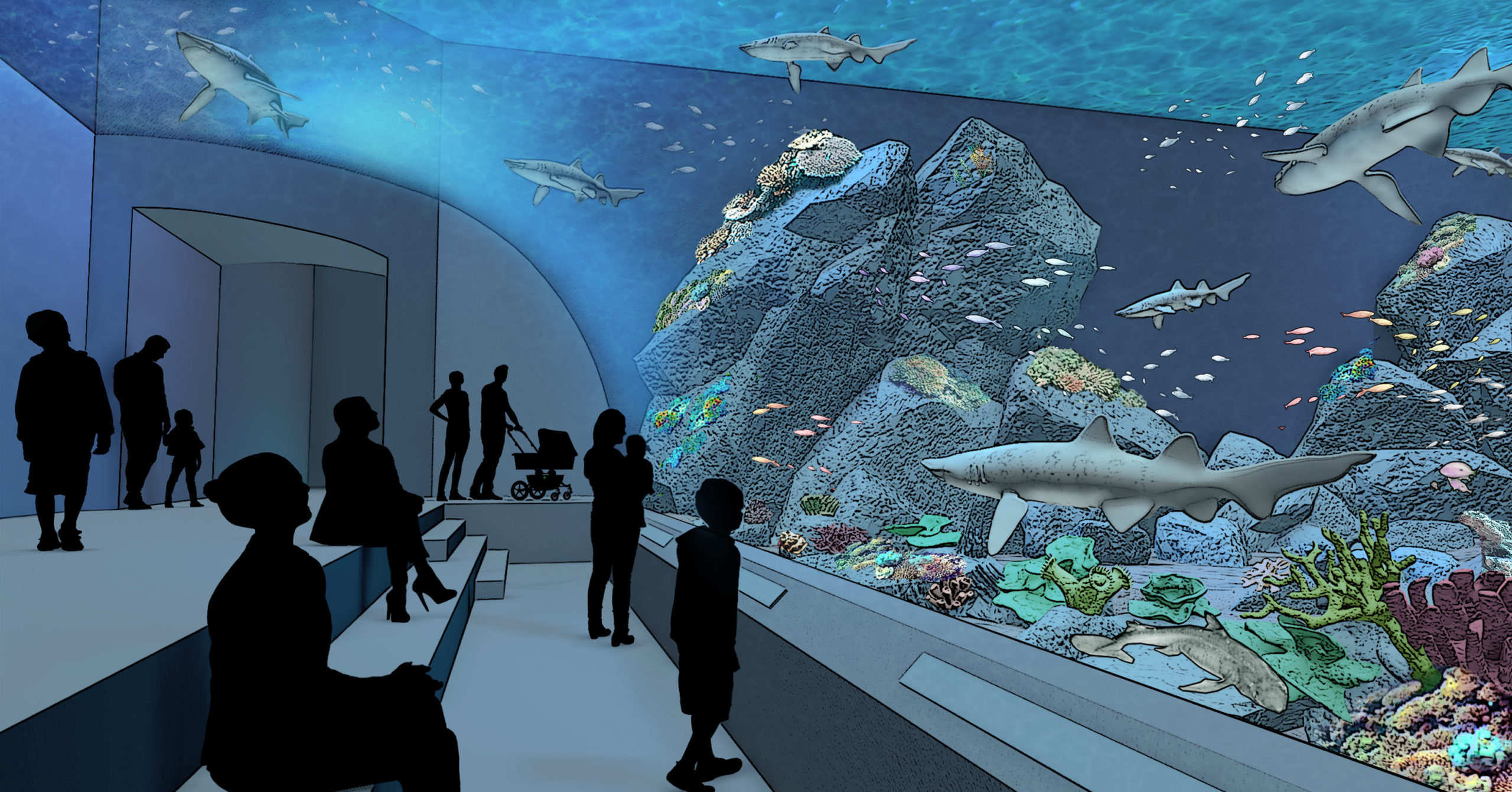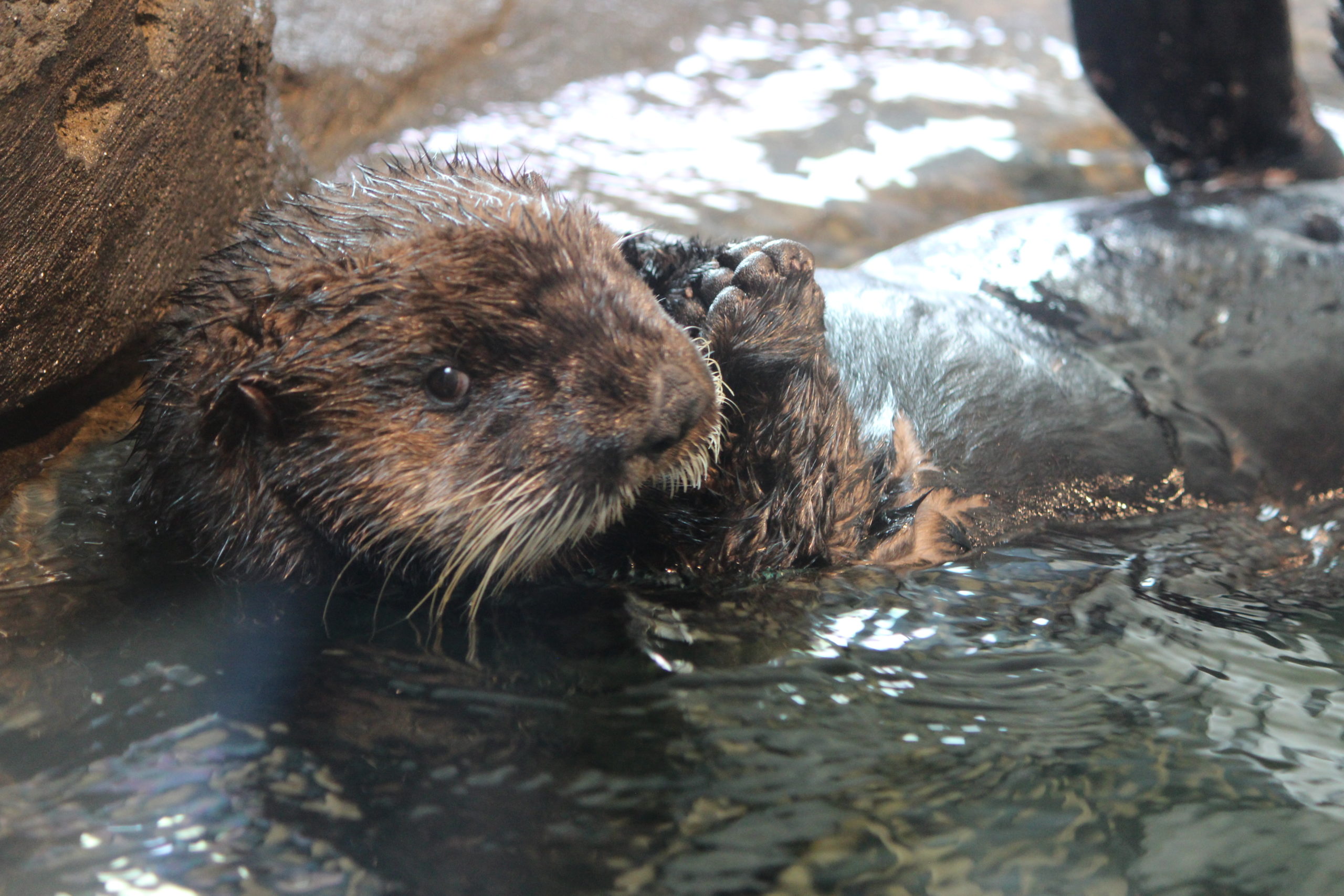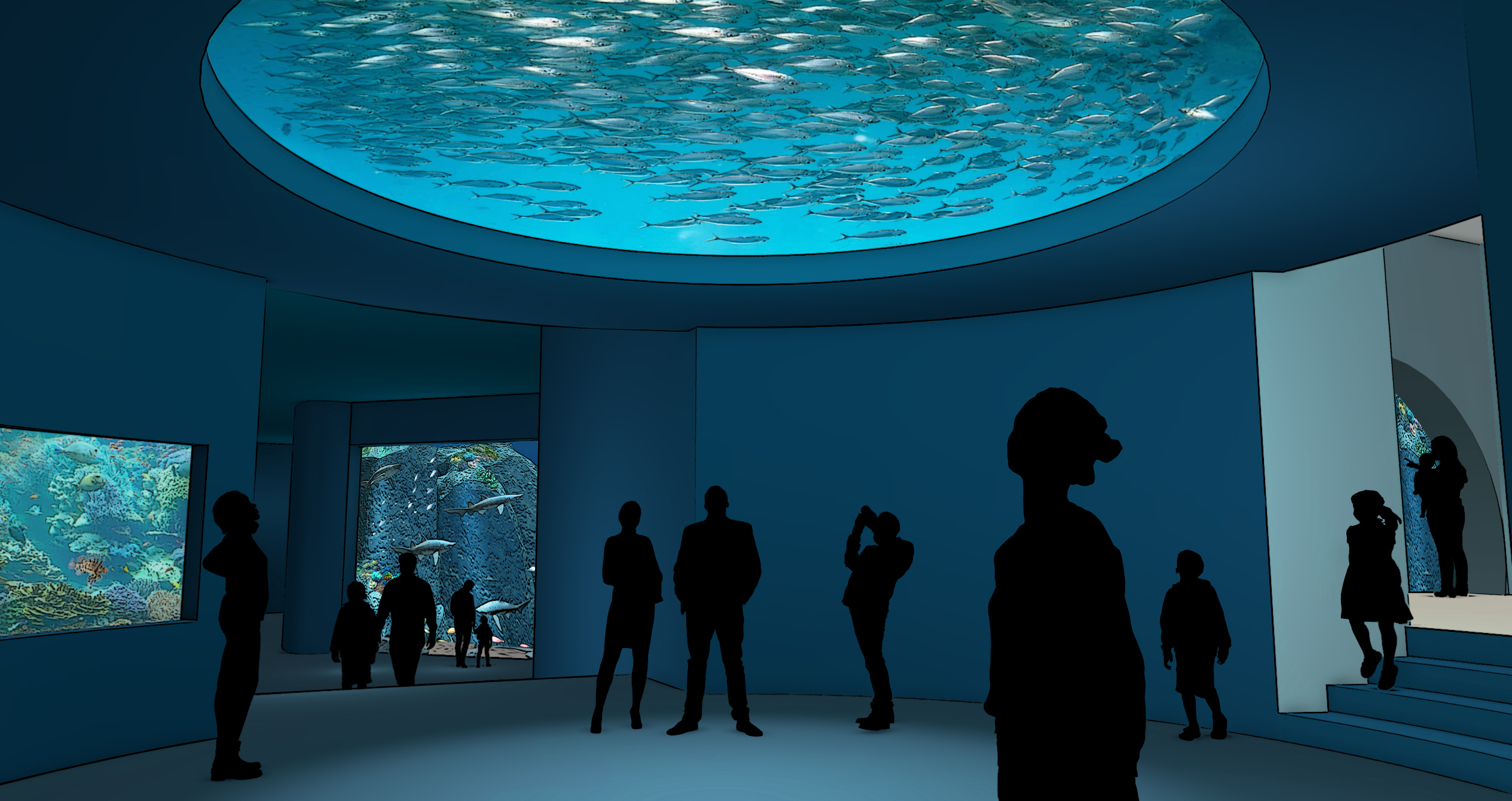
I understand this project’s been in development for quite some time—how does it feel to be in the home stretch?
It feels awesome to be in the final weeks of the project. I was over there this morning, and I’d truly love to have it open right now, but we’re not quite ready yet. And it has been a long time in the making, going back about ten years. Honestly, way back in the mid-2000s, we had an aquarium on the master plan, but it fell through because they’re very expensive. We’ve had some ups and downs, but we finally got to a place where we felt we had the funding, and we had the ability to go through with it. And that was, oh, probably late 2018. Despite the pandemic, we’ve been able to work through most of it, which brings us up to now—animals coming in all the time, going through quarantine, and going into their exhibits. It’s really just finishing touches now.
How are the animals sourced?
We have several different ways to bring animals in, and all of them include a great deal of flexibility and planning by our staff—they’ve done an amazing job. One way we bring animals in is by working with US Fish and Wildlife Services for animals going through a rehabilitation process for an injury or an issue where they can’t be returned to the wild. Two great examples of that are our sea turtle and our sea otters. We utilize them for education and conservation messages, and those are great stories to be able to tell.
We also bring in animals through sustainable fisheries. All of these methods have to be carefully planned and scheduled by our staff. We’ve had staff on the road, staff in the air. We had a facility in Wichita for a while to start bringing fish in and go through the quarantine process before our exhibits were ready. We’ve had multiple trips to Dallas, to the West Coast, Atlanta, and we’re about to have a trip to Tampa. So it’s all across the board on how we get our animals here.

How is this going to impact the zoo’s conservation efforts?
We’ve already been a part of a manta ray project down in Florida, and we’re looking at turtle projects. There will be more as we get our feet wet here, so to speak. Really, we want to make sure that everybody who’s visiting the aquarium will have a conservation message when they leave, so it’s not just about looking at the animals. Hopefully, they realize that just because we’re in Kansas City—and just about as far away from an ocean as you can get—doesn’t mean we don’t make a difference. We need to establish ourselves and get our employees up to speed with caring for the animals that are here, but I’m hoping we can also make an impact on the environment, as well.
Are there any new programs or exhibits you’re particularly excited about?
Oh, you’re talking to the wrong guy on that, because I like it all. That being said, I do think there are opportunities to help with conservation messaging and really get kids talking about the animals. The best ways are hands-on touch exhibits, where kids feel the animals, put their hands in the water, and get wet.
We have one warm-water exhibit with animals from the Atlantic Coast and the Gulf of Mexico, and then we have another one representing animals from the Pacific Coast, which is in cold water—about 55 degrees Fahrenheit. I’m hoping the differences will create conversations. There are probably a lot of people here in Kansas City that have never been to the ocean or may never go to the ocean. And revealing that not all oceans are the same—different salinities, different chemical makeups—allows people to understand how animals change to adapt to their environment. That’s the job I think we’ll be able to take on.
Learn more about the Sobela Aquarium—open September 1.



